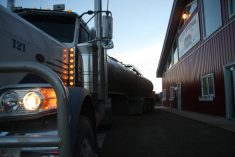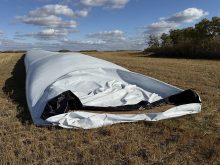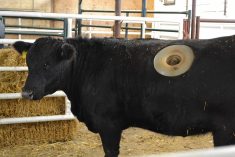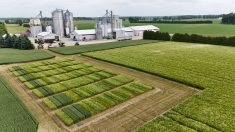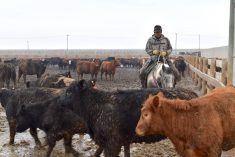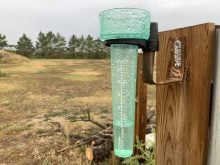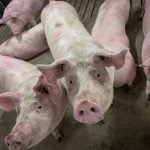The invasion of Ukraine and inflation top the list of food stories in 2022 for a leading food research institute, but front-of-package labelling, a shortage of California lettuce and U.S. approval of lab-grown chicken also made its Top 10 list.
While the war in Ukraine has dominated headlines since the Feb. 24 invasion, “many Canadians didn’t realize how that region of the world was so critical to the global agri-food sector,” the Agri-Food Analytics Lab at Dalhousie University said in its annual year-end report.
Wheat shipments from Ukraine fell by nearly half (to 8.3 million tonnes) in the last half of 2022 compared to a year earlier as Russia limited shipping in the Black Sea and missile and drone attacks cut power to the few ports still in operation.
Read Also

Grain farming’s hard times expected to continue
Rabobank says it will be two more years before North American grain farmers achieve break-even due to “monster” supplies and “sticky” crop input prices.
It wasn’t just the reduction of tonnage exported but also the ripple effects, said the report.
“With its exports, Ukraine can feed 400 million people every year. Russia’s exports, hit by sanctions, are also critical,” it stated.
“A few months after the invasion, many commodities reached record price levels. By June, processors had to pay more for inputs, which eventually affected the entire globe’s food inflation scenario.”
That includes Canada, where food price inflation continues to rise — hitting 11.4 per cent year over year as of the end of November, even though overall inflation fell to 6.8 per cent.
Though food inflation was lower here than in much of the world, many Canadians thought grocery chains were using rising prices to boost profits despite lack of evidence, said the report.
Several of the Top 10 stories generated only brief publicity this year, but the Agri-Food Analytics Lab said they will have a major impact in the years to come.
One was the federal government’s proposed front-of-package labelling rule. It will require nutrition symbols on foods high in saturated fat, sugars and sodium when it comes into effect in 2026. After an outcry from the cattle and hog sectors, Ottawa backed down on including ground beef and pork under the new measure.
Still, the report praised the new rules, calling it a “smart move” and saying it will “coax manufacturers to make healthier products.”
It also pointed to the lettuce shortage late in the year as a signal that things are changing.
“California is drying up, and it is increasingly becoming Canada’s problem,” the report states. “The lettuce shortage in Canada this year is yet another example of how climate change is forcing international food commerce to redefine itself.”
The approval of lab-grown chicken by the U.S. Food and Drug Administration was also hailed a as a game changer.
“Cultured meat is almost here,” the report said. “Once the USDA approves, the product will be commercialized in the United States.”
Other stories making the Top 10 list were blockades of border crossings, Ottawa’s goal of cutting nitrous oxide emissions from fertilizer by 30 per cent by 2030, the baby formula shortage, cyberattacks on agri-businesses, and avian flu.
The Agri-Food Analytics Lab, headed by well-known commentator Sylvain Charlebois, is a multi-disciplinarian initiative that focuses on agriculture, agri-business, food security and social aspects of food.



